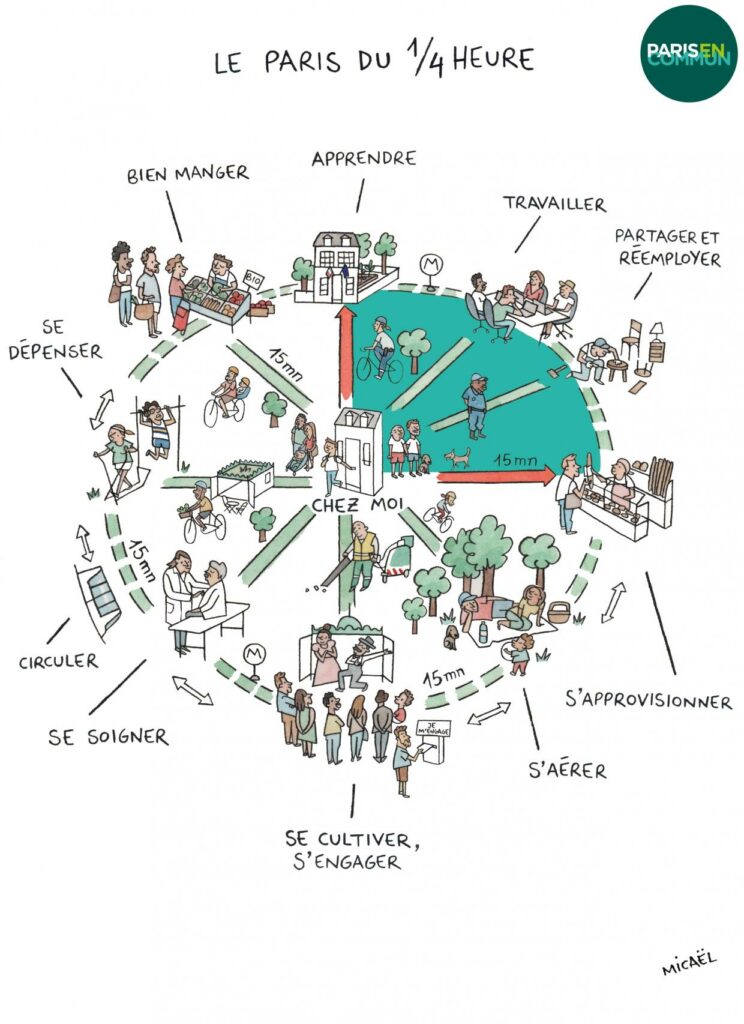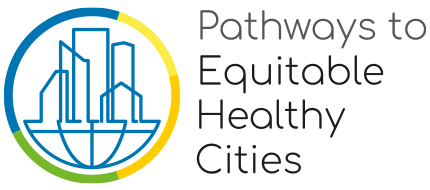Written by Avril Li (University of British Columbia)
More than four billion people currently live in urban areas globally and that number is projected to increase to about two-thirds of global population by 2050, approximately seven billion people. Through the pandemic in 2020 and increasing urban development, more people realized the importance and necessity of having open and accessible essential services such as grocery stores, parks and recreation centres in their neighbourhoods.
Traditional approaches to increasing accessibility to services centered around car-based transportation infrastructure. However, this is not a sustainable solution going forward since traveling with cars rely on fossil fuel and having minimal traffic congestion. A more equitable and sustainable approach is by having essential services close to where one person lives or works, reducing the reliance on automobile transportation and promoting more active travel. The “15-Minute City” captures exactly this idea.

Photocredit: Micael
The “15-Minute City” concept was developed by French Colombian scientist, Carlos Moreno, and popularized during the 2020 Paris city election. This concept is also being embraced by many major cities around the world such as Barcelona, Milan, Portland, Melbourne and Vancouver. It emphasizes access to essential services such as healthcare, entertainment, grocery stores within 15 minutes walking distance of where each person lives. In my master’s thesis project, I used the “15-Minute City” idea and assessed Metro Vancouver residents’ access to six essential services including (from most to least accessible): greenspace, public transportation stops, education centres, healthcare facilities, grocery stores and community centres.
Although Metro Vancouver is the third most populous urban area in Canada (2.4 million people), only 23% of the total population has access to all six essential services mentioned above within 15 minutes of walking. Access to these services were also not equitably distributed across the Metro Vancouver population. More urban municipalities had more access to these services while accessibility decreased in less urban municipalities. Accessibility to services was also better for areas with lower proportion of young children and high socioeconomic status.
Having a “15-Minute City” can ensure people’s access essential services and promote healthier and friendlier neighbourhoods by encouraging more walking, physical exercise and socialization. This study helped address the first step in achieving equitable access to services, which is identifying the level of equity of the distribution of various services. This is a part of a larger problem of accessibility that include other considerations such as service suitability and affordability, which can be further investigated. Similar efforts in understanding accessibility to services can also be applied to other international cities using the “15-Minute City” framework.

